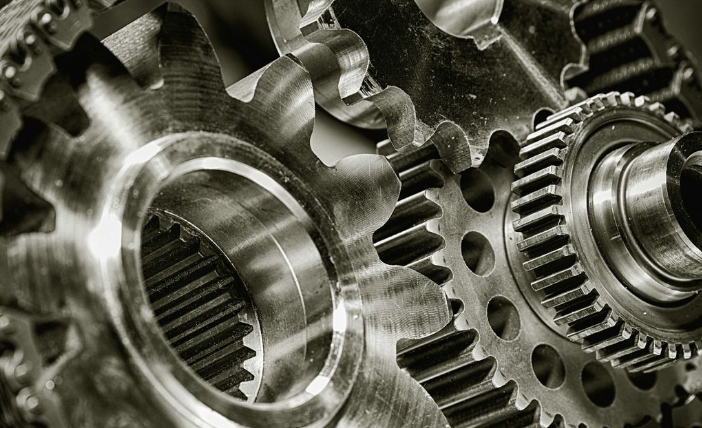Requirements of Gear Oil for Industrial Gears
Requirements of Gear Oil for Industrial Gears
For industrial gearboxes, now industrial gearboxes are made of new materials, with lighter weight, greater power generation, more durable and reliable, and higher loads of gear teeth and bearings. The smaller the size of the gear box, the less the lubricating oil capacity, and the higher the bearing capacity of the lubricating gear. This will result in higher operating temperature and cumulative oxidation process, sludge generation, shorter service life of oil products and gearbox components, and increased shutdown losses, maintenance and replacement costs of components. All of these put forward higher requirements for industrial gear oil.
1. Extreme Pressure and Wear Resistance of Oil Products
Scratch test of FZG gear machine is an important index to measure the bearing capacity of oil. Under the action of high speed, low speed, heavy load or impact load, industrial gear oil should quickly form boundary adsorption film or chemical reaction film, so as to ensure the smooth operation of gear meshing and prevent the scratch and adhesion of tooth surface. FZG gear machine wear test can effectively evaluate the extreme pressure and wear resistance of gear oil.
2. Bearing Protection Performance of Oil Products
There are not only gears but also bearings in the gear system. It is also an important part of the gearbox. Practice at home and abroad shows that bearing failure often leads to catastrophic damage to gearbox. According to statistics, more than 70% of the bearings can not reach the expected service life in the normal use process, so the reasonable design and full lubrication of bearings are the key factors affecting the normal operation of gearbox. There is no requirement of bearing protection in the standard requirements of general gear oil, so with the development of traditional gear system technology, the standard of mudguard puts forward new requirements for bearing protection performance.
3. Compatibility of Oil with Sealing Materials and Rubber for Shaft Seals
In order to prevent the unplanned shutdown of industrial reducer caused by oil leakage, it is generally required that the sealing gasket can withstand the invasion and corrosion of gear oil and extremely high working temperature. In the use of industrial gear oil, it is inevitable to contact rubber parts as the sealing material of the system. If the compatibility between oil and rubber is poor, it will cause excessive expansion or contraction of rubber, accelerate the aging of rubber, cause oil leakage, cause potential safety hazards, and affect the normal operation of equipment. There is no specific requirement for the sealing and rubber compatibility of gear oil in the traditional CKD standard, but the Flender specification requires the compatibility test with Loctite liquid sealing material (Loctite 128068) and the rubber compatibility test of shaft seal (static test).
4. Bubble Resistance of Oil Products
Industrial gear oil will enter the air after circulation and agitation. It will easily generate foam. If the foam resistance is not good, the foam produced can not disappear quickly. It will affect the formation of oil film on gear meshing, and also reduce the actual oil content and affect the thermal DI. The entrainment effect of foam. Therefore, the defoaming performance of gear oil is very important.
5. Micro-pitting resistance of oil products
Micro-click phenomenon, also known as gray spot phenomenon, refers to the characteristic phenomenon of gray-white state on the surface of teeth in the process of gear work. Its essence is that there are micro-cracks on the surface of the teeth with a small amount of material transfer, that is, the formation of the surface of the teeth. The comprehensive process of microcracks and cold bonding. This phenomenon is also a new problem in the development of gear box technology. Gear box technology usually occurs on the meshing surface of low-speed heavy-duty gears, such as wind turbine gearbox and marine gearbox.
It is generally believed that the mechanism of micro-pitting is due to the mixing or boundary lubrication of the meshing side of low-speed heavy-duty gears. In the process of gear meshing, because of the direct contact between the peaks of the micro-structure of the two tooth surfaces, the local temperature of the tooth surface rises under the action of higher contact shear stress and relative friction. When oil film or chemical reaction film B is drilled downwards, complex elastic-plastic deformation will occur. In this process, the surface of the gear will also be generated. Microcracks and material transfer. With the development of gearbox technology used in wind power, ship and other industries, micro-pitting corrosion has become a growing concern of major reducer manufacturers. For this reason, Flender standard also puts forward new requirements for anti-micro-pitting performance, requiring the use of gear oil through FVA54 test, which is also recognized as anti-micro-pitting test methods for performance testing in the world at present.
6. Filtration performance of oil products
The filtering performance of gear oil refers to the ability of gear oil to pass through the filter without blocking the filter under actual working conditions. The filtration performance of oil is very important. This is because the cleanliness of oil is another important factor affecting the anti-micro-corrosion ability of oil products. Filtration often results in different cleanliness of oils, but different cleanliness of oils. Filtering is often overlooked. If the oil is mixed with too large and hard abrasive particles, the oil film or boundary film between the two contact surfaces of gears or bearings will be damaged, resulting in various types of damage, so micro-pitting corrosion is easy to occur. Therefore, it is very important to maintain good filterability and cleanliness or to limit the number of micro-particles. Flender also added the requirements of the new filterability test in the 15th edition.

